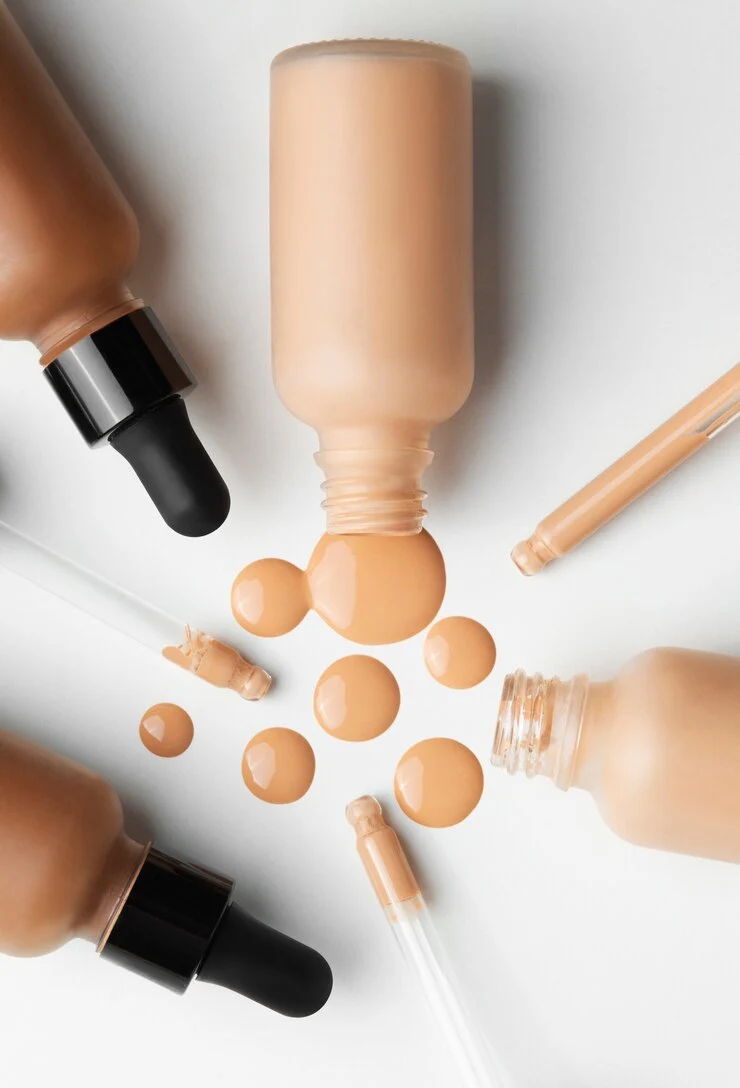Makeup can transform not only how we look but also how we feel. Among the many products in a makeup bag, concealer and foundation are essentials. While both play pivotal roles in achieving a flawless finish, they serve different purposes. Understanding when and how to use each can elevate your makeup game, ensuring you always look your best.
Foundation: The Canvas of Your Makeup
Think of foundation as the canvas for your makeup. As Bobbi Brown, founder of Bobbi Brown Cosmetics, aptly puts it, “Think of foundation as your canvas and concealer as your touch-up tool.” Foundation is designed to even out your skin tone, providing a uniform base for the rest of your makeup.
Types of Foundation
Foundations come in various forms, including liquid, powder, cream, and stick. Each type has its unique benefits:
- Liquid Foundation: Versatile and suitable for most skin types, offering buildable coverage.
- Powder Foundation: Ideal for oily skin, providing a matte finish.
- Cream Foundation: Great for dry skin, offering a dewy finish.
- Stick Foundation: Convenient for on-the-go application and touch-ups.
When to Use Foundation
Foundation is perfect for those days when you want an even, polished look. It’s especially useful for:
- Daily Wear: A light to medium coverage foundation can provide a natural look.
- Special Occasions: Full-coverage foundation ensures a flawless appearance in photos.
- Uneven Skin Tone: Foundation helps in blending areas of discoloration.
I remember my first foray into the world of foundation. As a teenager with a few freckles and an uneven skin tone, I was always self-conscious. My mom introduced me to a light, liquid foundation that enhanced my natural beauty without covering up my freckles. That was a game-changer for me, boosting my confidence immensely.
Concealer: The Precision Tool
Concealer, on the other hand, is like your precision tool. It has a thicker consistency and offers higher coverage, making it perfect for hiding blemishes, dark circles, and other imperfections. Celebrity makeup artist Mary Phillips says, “Concealer has a thicker consistency and higher coverage, perfect for hiding blemishes and dark circles.”
Types of Concealer
Concealers also come in various forms, including liquid, cream, stick, and color-correcting:
- Liquid Concealer: Great for most skin types and offers buildable coverage.
- Cream Concealer: Ideal for dry skin and provides full coverage.
- Stick Concealer: Convenient for spot treatment and touch-ups.
- Color-Correcting Concealer: Comes in different shades (like green for redness) to address specific concerns.
When to Use Concealer
Concealer is your go-to for targeted correction. Use it for:
- Blemishes: Conceal acne spots and blemishes with a high-coverage concealer.
- Dark Circles: Brighten under-eye areas with a lighter concealer.
- Redness: Neutralize redness with a green-tinted concealer.
- Highlighting: Use a lighter shade to highlight areas like the forehead, nose bridge, and chin.
During my college years, late-night study sessions often left me with dark circles. Discovering the magic of concealer was a lifesaver. A few dabs under my eyes, and I instantly looked more awake and refreshed, no matter how many hours of sleep I had missed.
Combining Foundation and Concealer
For a truly flawless finish, consider using both foundation and concealer. Makeup artist Daniel Martin, known for working with Gigi Hadid, emphasizes, “Foundation evens out your entire skin tone, while concealer targets specific imperfections.” Here’s how you can combine them:
- Apply Foundation First: Start with foundation to create an even base.
- Use Concealer for Targeted Areas: Apply concealer on blemishes, dark circles, and any other areas needing extra coverage.
- Blend Seamlessly: Use a damp makeup sponge or brush to blend the products into your skin.
- Set with Powder: Finish with a setting powder to lock everything in place.
Lisa Eldridge, a makeup artist and beauty YouTuber, suggests, “For a natural look, use a lighter coverage foundation and apply concealer only where needed.” This technique helps in achieving a natural, yet polished look without using too much product.
Layering Technique
For maximum coverage, Wayne Goss, a celebrity makeup artist, recommends, “You can even layer concealer and foundation! Apply foundation first for overall coverage, then concealer for extra camouflage.” This layering technique ensures that any stubborn imperfections are well hidden.
Experimentation and Personalization
Makeup artist Monika Blunder, known for working with Kim Kardashian West, encourages experimenting with different techniques. “The best way to learn is to experiment! See what works best for your skin type and desired coverage.” Everyone’s skin is different, and finding what works best for you can make all the difference.
The Role of Skincare
Before diving into makeup, it’s crucial to remember the importance of skincare. Healthy skin is the foundation (pun intended) for a flawless makeup application. According to the American Academy of Dermatology, proper skincare can significantly impact how well your makeup applies and lasts. Regular cleansing, moisturizing, and sun protection are essential steps to keep your skin in top condition.
Studies and Research
For those interested in the science behind makeup, “Cosmetics and Skin Care: Science and Technology” by Diana Boucher provides an in-depth look at the formulations of products like concealer and foundation. Additionally, “The Consumer’s Guide to Long-Wear Makeup” by Cosmetic Ingredients Review offers valuable insights into choosing long-lasting makeup products, ensuring your look stays fresh throughout the day.
The Psychological Impact of Makeup
Makeup is more than just a tool for enhancing beauty; it also has psychological benefits. “The Psychology of Makeup: Why We Wear It and What It Does to Us” by Nicola Maddocks delves into the reasons people wear makeup and its impact on self-esteem and confidence. Whether it’s using foundation to create a smooth canvas or concealer to hide imperfections, makeup can boost our confidence and help us present our best selves to the world.
I’ll never forget the day I nailed my makeup for a job interview. I used a medium-coverage foundation for a polished look and a concealer to hide the stress-induced blemishes that had popped up. I felt so confident walking into that room, and I truly believe that the flawless finish of my makeup gave me the extra boost I needed to impress the interviewers.
Conclusion
In the world of makeup, both foundation and concealer have their distinct roles. Foundation acts as the canvas, evening out your skin tone and creating a uniform base. Concealer is the precision tool, perfect for targeting specific imperfections. By understanding when and how to use each product, you can achieve a flawless finish that enhances your natural beauty.
Experiment with different products and techniques to find what works best for you. Remember, the key to great makeup is not just in the products themselves but also in the confidence they help you achieve. Whether you’re heading to work, a special event, or just running errands, a well-applied foundation and concealer routine can make you feel ready to conquer the world.
So next time you reach for your makeup bag, remember the wise words of the experts: your foundation is your canvas, and your concealer is your touch-up tool. Use them wisely, and you’ll always have a flawless finish.




